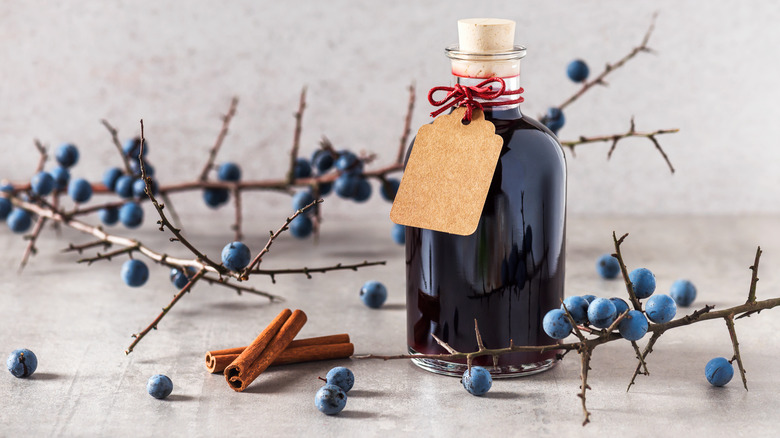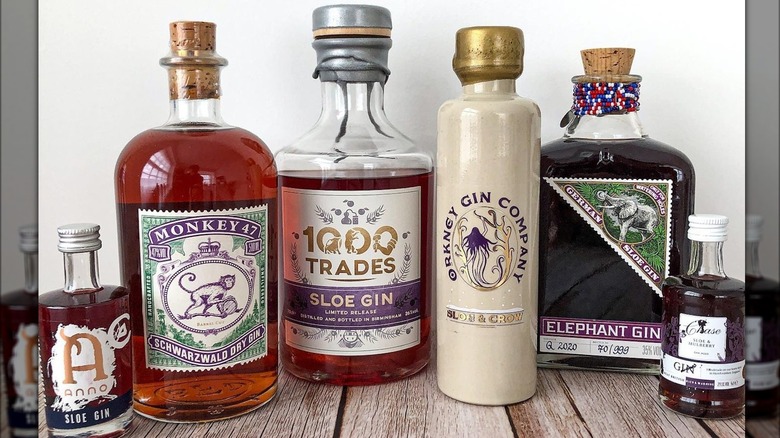See Why Sloe Gin Is Something Of A Misnomer
London dry gin, navy strength gin, old Tom gin, sloe gin ... there are countless gin variations to try, but one of these gins is not like the other. Although it has the word gin right in its name, and its recipe includes this base spirit, sloe gin is considered a liqueur. That's because it's lower proof, sweeter, and made through a different process than standard gin. If you don't live in Britain, you may also be unfamiliar with the word sloe. No, it's not an alternative spelling of the word slow — it's a fruit that plays a central role in the magic of sloe gin.
Sloe gin gets its name from the sloe berry, which is technically a drupe or stone fruit that grows on the blackthorn bush. These bushes are used as property dividers throughout the British countryside and produce berries for harvest from September through November. Unfortunately, they're extremely bitter, so they're not something you'd want to eat fresh like a blueberry or raspberry. Instead of letting them go to waste, locals mellow out the berries with sugar and use them to make jam or sloe gin.
Sloe gin-making at home and beyond
Whether it's made at home from the fall harvest, or on a commercial scale, the sloe gin-making process is both straightforward and time-consuming. It starts with painstakingly pricking each sloe berry to allow for a fuller infusion. Then the berries are steeped in gin and sugar in a cool, dark place for about two to three months, though some may extend the infusion longer. The resulting liqueur can vary based on the type of gin used, infusion time, and sugar added, but will have a vibrant pink to ruby color and a flavor profile that is smooth, tart, and berry-forward. This process can also be used to make other types of infused gin with different botanicals and fruit, like how you'd make an infused simple syrup at home.
Sloe gin is often sipped straight, similar to limoncello, but it can also be used in a variety of cocktails. Its tart berry notes and complexity make it a versatile addition to warming fall and winter cocktails as well as citrusy summer ones. If you're looking for an introduction to sloe gin, you can't go wrong with a classic sloe gin fizz that combines gin, sugar, lemon juice, an optional frothy egg white, and soda water to create a smooth, sparkling, and tart drink, usually enjoyed in a highball glass. For something even more bitter, take the Long Pink Cadillac cocktail for a ride, which has St. Germain, Angostura bitters, Avera Amaro, lemon, ginger beer, and Plymouth Sloe Gin.

